Master 2022
Het hoge aantal inzendingen in deze categorie van 2021 (16) werd niet gehaald, maar met 12 inzendingen voor de categorie Master was de jury dik tevreden. Daarbij voerde de TU Delft zoals gewoonlijk de boventoon. Maar er waren ook inzendingen van de TU Eindhoven én van de opleiding Constructief ontwerpen BV/BmS.
« terug naar StudentenSTAALprijs 2022 Meld je aan voor dit evenement1e prijs: Hagar El Bamby (Technische Universiteit Delft) - The experimental and numerical investigation of high strength steel X-joints under tension
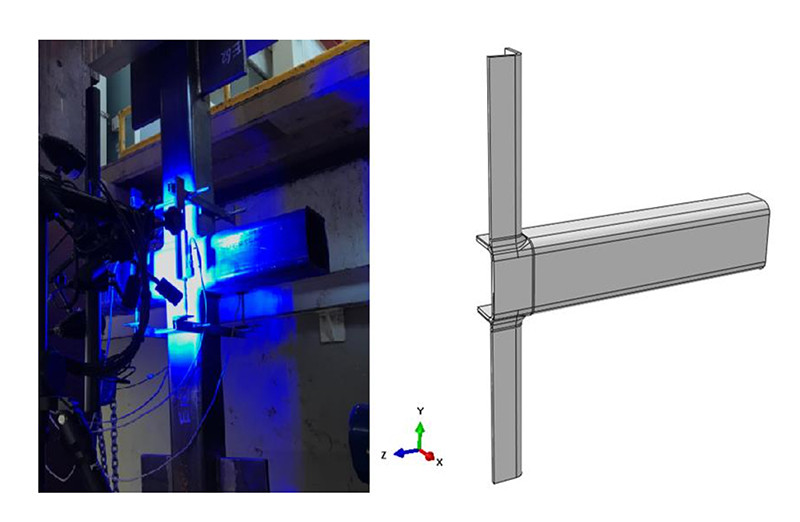 Higher strength steels (HSS) hollow sections with steel grades from S460 up to and including S700 are becoming increasingly competitive in long span structures. Reduction of self-weight is accomplished with the smaller wall thickness of the hollow section, leading to fabrication, transport and execution benefits. The use of HSS has a positive effect on the CO2 equivalent emission, which is aligned with the European Green Deal for the future development of the construction sector. Lack of experimental evidence is identified as one of the main reasons to propose rather pessimistic material factors in the revised version of EN1993-1-8 [5] for design in tubular joints. The revised version, published in 2020, recommends material reduction factors for the design of joints made of steel with yield strength larger than 460 and up to 700 MPa, in the range from 0.9 to 0.8.
Higher strength steels (HSS) hollow sections with steel grades from S460 up to and including S700 are becoming increasingly competitive in long span structures. Reduction of self-weight is accomplished with the smaller wall thickness of the hollow section, leading to fabrication, transport and execution benefits. The use of HSS has a positive effect on the CO2 equivalent emission, which is aligned with the European Green Deal for the future development of the construction sector. Lack of experimental evidence is identified as one of the main reasons to propose rather pessimistic material factors in the revised version of EN1993-1-8 [5] for design in tubular joints. The revised version, published in 2020, recommends material reduction factors for the design of joints made of steel with yield strength larger than 460 and up to 700 MPa, in the range from 0.9 to 0.8.
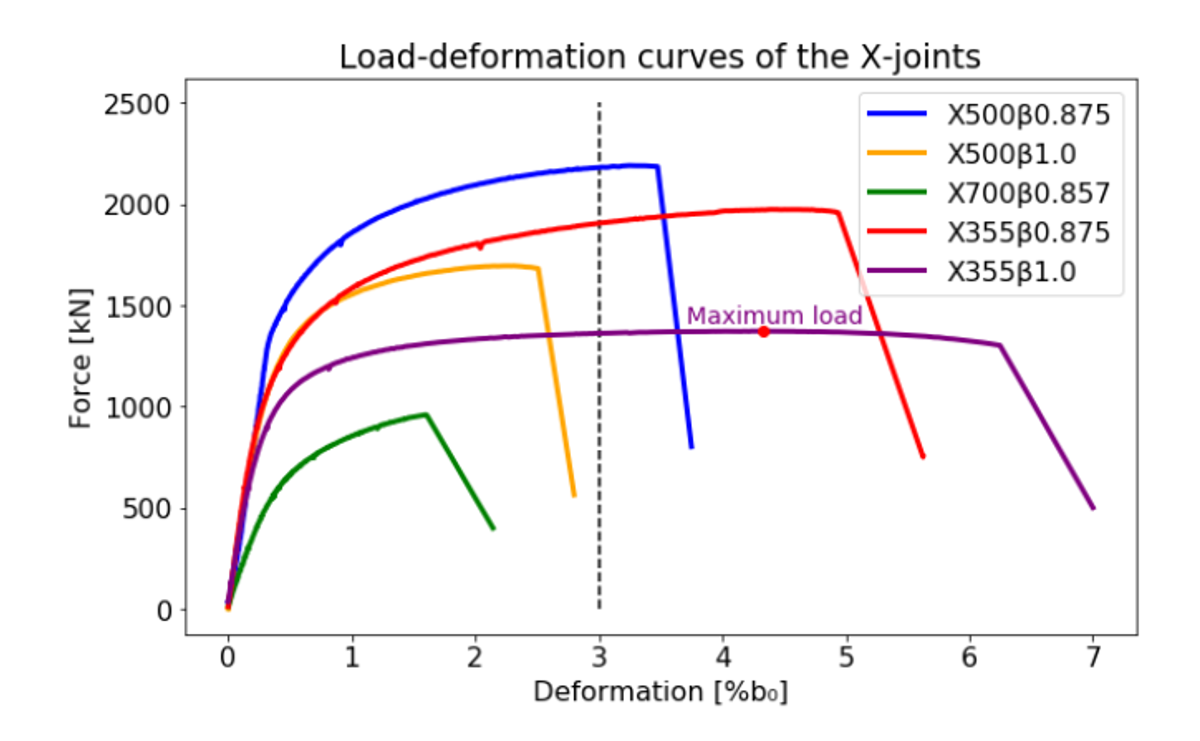 In this thesis, the behaviour of the X-joints made of steel grade S355, S500 and S700 are investigated experimentally and numerically, and the proposed material reduction factors are discussed. Five full-scale welded X-joints in tension with rectangular hollow section were tested Stevin Lab II, TUD. Additionally, base material and butt-welded coupon specimens are tested to obtain the engineering stress-strain relationship of the base material, weld and heat affected zone (HAZ).
In this thesis, the behaviour of the X-joints made of steel grade S355, S500 and S700 are investigated experimentally and numerically, and the proposed material reduction factors are discussed. Five full-scale welded X-joints in tension with rectangular hollow section were tested Stevin Lab II, TUD. Additionally, base material and butt-welded coupon specimens are tested to obtain the engineering stress-strain relationship of the base material, weld and heat affected zone (HAZ).
Based on the results of coupon tests, finite element software ABAQUS is used to model X- joint and to supplement the limited number of experiments. Furthermore, result of a parametric study is presented in which effects of three parameters: the yield strength, the parameter β (ratio of the width of the brace member to that of the chord member) and the thickness of the chord are investigated to analyse their influence on the structural performance of X-joints. Following properties are thoroughly examined: static strength, stiffness, ductility and failure mode. Finally, conclusions are drawn on the validity of the material reduction factors.
Het oordeel van de jury:
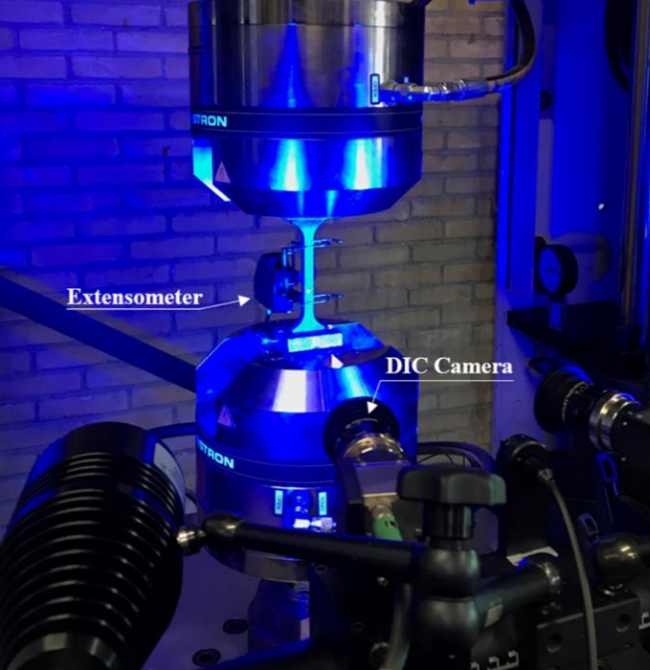 ‘Mega! Ongelofelijk wat een werk. Lijkt wel een PhD’, luidt het unanieme juryoordeel. Zeer grondig en uitvoerig onderzoek naar elementaire spanningen in gekruiste buisverbindingen. Mooi is ook de combinatie van staalsoorten, lassen en materiaaleigenschappen in het nieuwe domein. Dit is buitencategorie. Fundamenteel en relevant onderzoek dat bijdraagt aan betere kennis en toepassing van staal. Onderbouwd met tests in het Stevinlab. Dit afstudeerwerk brengt de ontwerppraktijk stappen verder. ‘Hiervoor mogen we dankbaar zijn.’ ‘Meer lof voor dit werk is haast onmogelijk’, zo sprak de jury volmondig.
‘Mega! Ongelofelijk wat een werk. Lijkt wel een PhD’, luidt het unanieme juryoordeel. Zeer grondig en uitvoerig onderzoek naar elementaire spanningen in gekruiste buisverbindingen. Mooi is ook de combinatie van staalsoorten, lassen en materiaaleigenschappen in het nieuwe domein. Dit is buitencategorie. Fundamenteel en relevant onderzoek dat bijdraagt aan betere kennis en toepassing van staal. Onderbouwd met tests in het Stevinlab. Dit afstudeerwerk brengt de ontwerppraktijk stappen verder. ‘Hiervoor mogen we dankbaar zijn.’ ‘Meer lof voor dit werk is haast onmogelijk’, zo sprak de jury volmondig.
2e prijs: Vesko Milev (Technische Universiteit Delft) - Feasibility of medium span steel-timber hybrid bridges
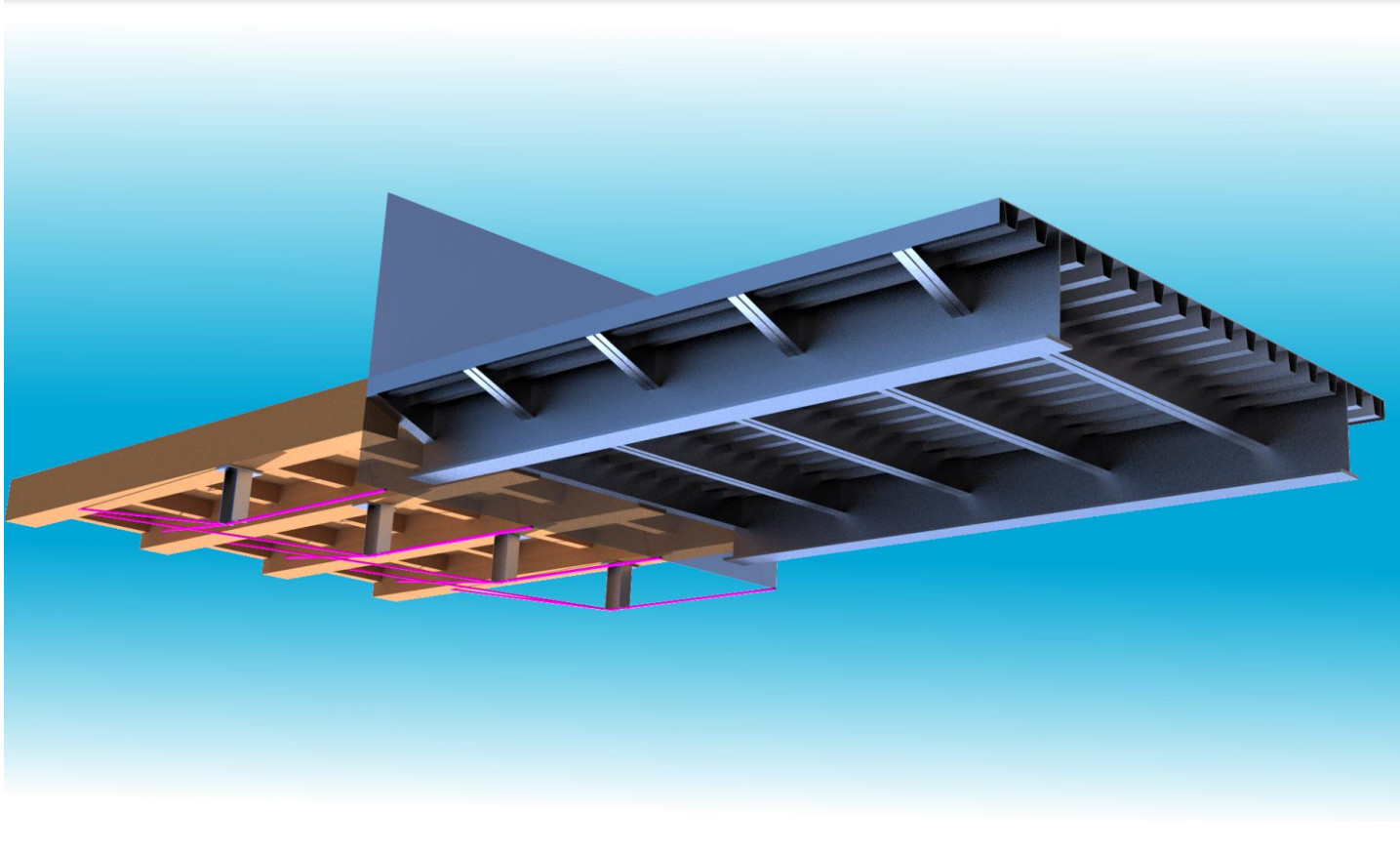 The connections and support cables are designed with structural steel. These allow for demountability of individual elements and thus replacement whenever necessary.
The connections and support cables are designed with structural steel. These allow for demountability of individual elements and thus replacement whenever necessary.
Concrete and cteel are the materials with the largest market share in the construction industry and have been for a long time. With environmental awareness increasing, timber is regaining popularity due to the potential for carbon neutral and even carbon negative construction. Use of structural wood elements in bridges, however, is often limited to foot- and cycle bridges.
In this thesis, key aspects with regards to the design of heavy traffic bridges incorporating timber members are identified. A fully steel bridge and an equivalent bridge, combining timber members with steel are designed within boundaries set by a case study. These designs are developed to a level sufficient for an adequate comparison of the bridges. The basis on which the bridges are compared are laid out, followed by the conditions the bridges are subjected to. These are based on typical conditions found in an urban Dutch environment. Analytic equations are automated, by way of python scripts, for the analysis and optimization of the steel bridge longitudinal dimensions under simplified ULS loading.
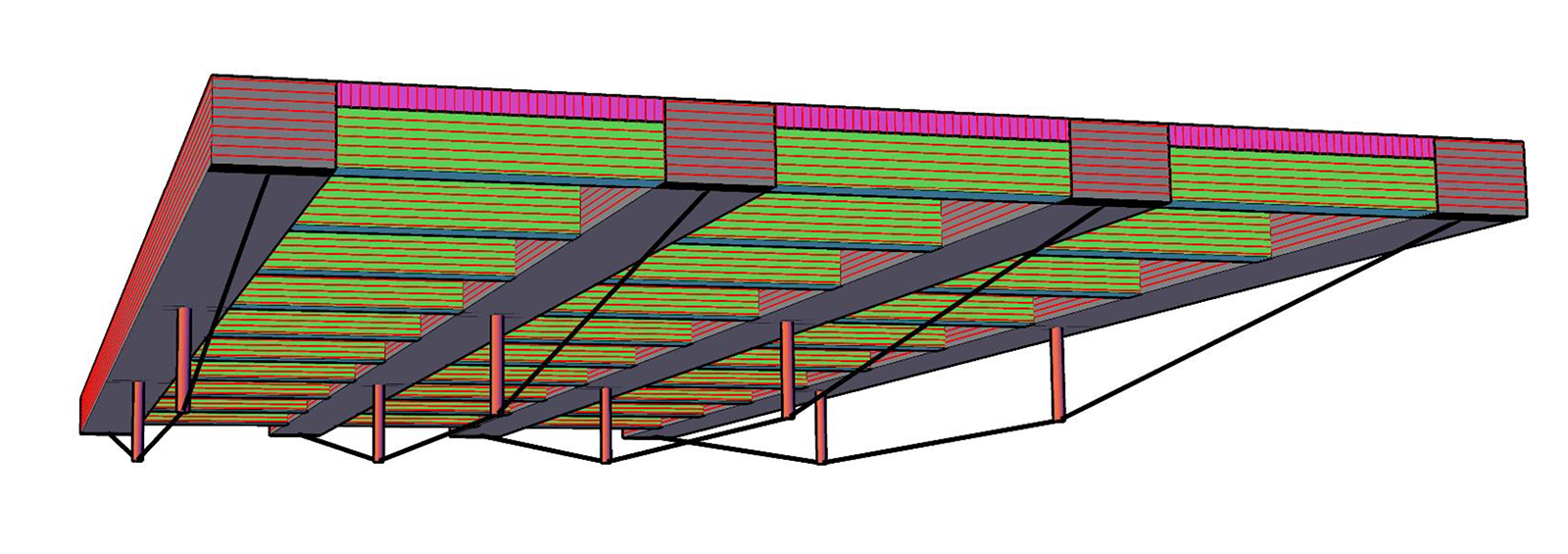 After the optimization is complete, these initial bridge dimensions are verified with a 2D plate element model in SCIA engineer. The full loading for the bridge during utilization, save for accidental loading, is then modelled and the bridge dimensions are adapted in order to meet ULS, SLS, and fatigue conditions. Several potential versions of a bridge with timber members are considered. Following this, a bridge with a mostly timber superstructure, supported by a self-anchored cable system is further worked out. For this, a SCIA model, with 1D elements and subjected to the same loads as its steel counterpart, is produced.
After the optimization is complete, these initial bridge dimensions are verified with a 2D plate element model in SCIA engineer. The full loading for the bridge during utilization, save for accidental loading, is then modelled and the bridge dimensions are adapted in order to meet ULS, SLS, and fatigue conditions. Several potential versions of a bridge with timber members are considered. Following this, a bridge with a mostly timber superstructure, supported by a self-anchored cable system is further worked out. For this, a SCIA model, with 1D elements and subjected to the same loads as its steel counterpart, is produced.
The incompatible combination of 1D elements, thick cross sections, and surface loads is addressed by the use of connector elements (“dummy members”) and individual load panels per member. After the global optimization of the bridge dimensions with regards to ULS and SLS, the connections are designed with a combination of detail 2D element FE models and analytic equations. The forces and support conditions of the connections follow from the global bridge design. A fatigue check is then run on the timber members of the bridge. Subsequently, the durability and eco- costs of the bridges are computed. The data for the durability estimation of the steel bridge is based on experience within Iv- Infra and the durability of the timber bridge is estimated using the RISE factor method. The eco- costs of the bridges are computed using the IDEMAT database.
The results from the analyses are discussed based on this. Finally, aspects of relevance in the design of timber bridges are synthesized and recommendations for the application of bridges and further research are given.
Het oordeel van de jury:
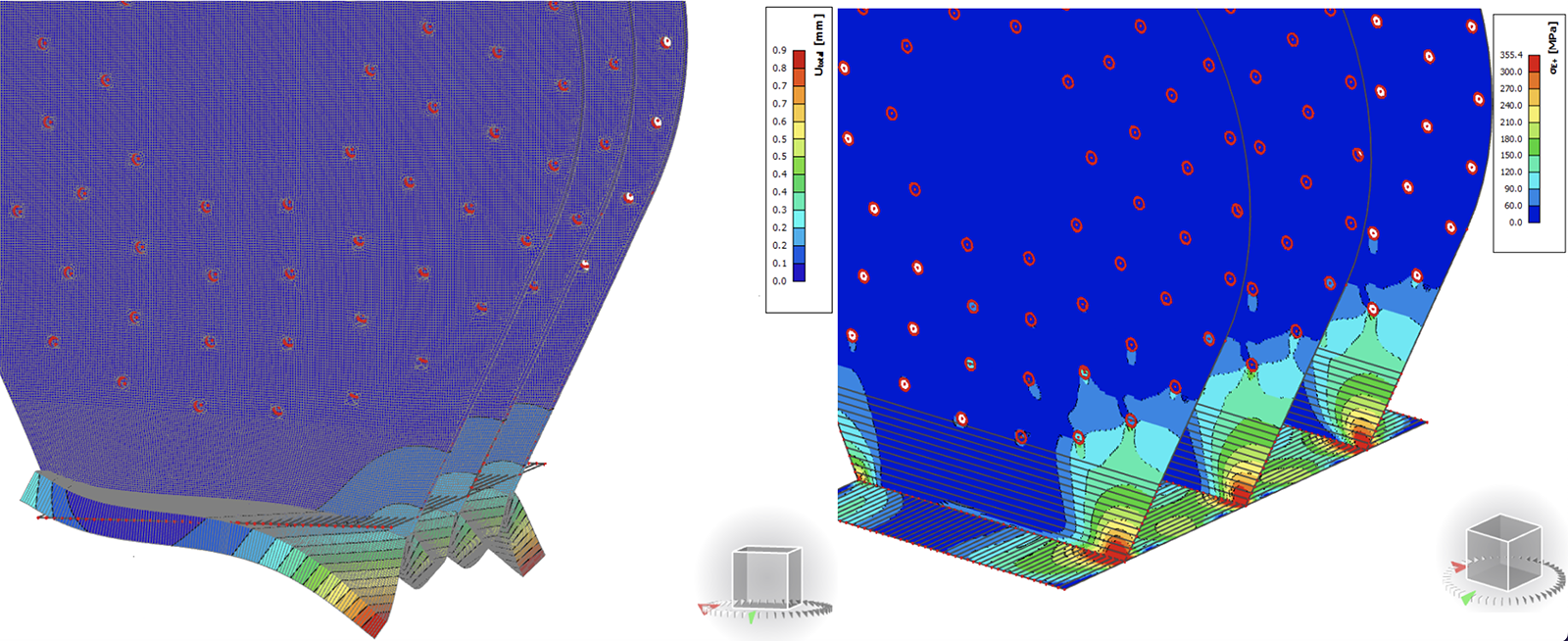 Een opvallende inzending… een concept in hout voor een brug met middelgrote overspanning. ‘Kruip klinkt als een langzame dood voor houtconstructies’, drukte een van de juryleden zich poëtisch uit. Kruip is inderdaad een aspect, dat in deze toepassing speciale aandacht verdient. Maar dit afstudeerwerk is legitiem en bovenal relevant om hout te laten groeien op nog onontgonnen terrein. De toegepaste technologie, door de houtconstructie te ondersteunen met een stalen onderspannen constructie, is realistisch. Het project is grondig en ambitieus, zoals de jury graag ziet. De combinatie van materialen klopt. En de uitwerking van handberekening naar geavanceerde dynamica is lovenswaardig.
Een opvallende inzending… een concept in hout voor een brug met middelgrote overspanning. ‘Kruip klinkt als een langzame dood voor houtconstructies’, drukte een van de juryleden zich poëtisch uit. Kruip is inderdaad een aspect, dat in deze toepassing speciale aandacht verdient. Maar dit afstudeerwerk is legitiem en bovenal relevant om hout te laten groeien op nog onontgonnen terrein. De toegepaste technologie, door de houtconstructie te ondersteunen met een stalen onderspannen constructie, is realistisch. Het project is grondig en ambitieus, zoals de jury graag ziet. De combinatie van materialen klopt. En de uitwerking van handberekening naar geavanceerde dynamica is lovenswaardig.


